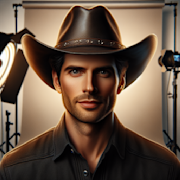The Shining (1980)

Released in 1980, The Shining is a psychological horror film directed by Stanley Kubrick, based on the novel of the same name by Stephen King. The movie has become a cult classic over the years, known for its iconic performances, eerie atmosphere, and unforgettable scenes. Join us as we explore the legacy of The Shining and why it continues to captivate audiences decades after its release.
The Plot
The Shining follows the story of Jack Torrance, a writer and recovering alcoholic who takes a job as the winter caretaker of the Overlook Hotel in Colorado. Jack moves into the hotel with his wife Wendy and son Danny, who possesses psychic abilities known as “the shining.” As the winter snow traps the family in the hotel, Jack begins to unravel mentally, haunted by supernatural forces within the hotel that drive him to madness.
The Characters
One of the standout elements of The Shining is its memorable characters, brought to life by a talented cast. Jack Nicholson delivers a chilling performance as Jack Torrance, capturing the character’s descent into madness with a mixture of intensity and vulnerability. Shelley Duvall shines as Wendy Torrance, portraying a sense of fear and helplessness as she struggles to protect her son from Jack’s growing instability. However, the breakout star of the film is Danny Lloyd, who plays the young Danny Torrance with a depth and maturity beyond his years.
The Cinematography
Stanley Kubrick’s meticulous attention to detail is evident throughout The Shining, particularly in its cinematography. The film is filled with striking visuals, from the expansive halls of the Overlook Hotel to the eerie and surreal imagery that haunts Jack’s descent into madness. Kubrick’s use of steady tracking shots and symmetrical compositions creates a sense of unease and foreboding, establishing a tense and claustrophobic atmosphere that lingers long after the credits roll.
The Themes
The Shining explores a variety of complex themes, including isolation, madness, and the supernatural. The isolation of the Overlook Hotel mirrors Jack’s psychological isolation, as he becomes increasingly disconnected from reality and consumed by the malevolent forces within the hotel. The theme of madness is central to the film, as Jack’s descent into madness blurs the line between reality and hallucination, leaving both the characters and the audience questioning what is real. Additionally, the presence of supernatural forces within the hotel adds an element of mystery and dread, heightening the film’s sense of horror and unease.
The Legacy
Decades after its release, The Shining remains a cultural touchstone in the horror genre. Its iconic imagery, memorable performances, and enduring sense of unease have solidified its status as a classic of the genre. The film has inspired countless homages, parodies, and analytical discussions, with fans and critics alike continuing to dissect its deeper meanings and hidden symbolism. The Shining stands as a testament to the lasting impact of Stanley Kubrick’s vision and remains a must-see for any fan of horror cinema.
In conclusion, The Shining is a masterclass in psychological horror, blending stunning visuals, captivating performances, and thought-provoking themes to create an unforgettable cinematic experience. Whether you’re a seasoned horror fan or just looking for a good scare, The Shining is sure to leave a lasting impression that will stay with you long after the credits roll.

Alberto Miller
Movie Fanatic
More From Classics Authority Movies

Movie
The Enchanting Power of Classic Fantasy Films

Movie
Classic Movies: Where Art and Technology Collide

Movie
Unmasking Classic Film Villains: Evil Never Looked So Good

Movie
Italian Cinema Titans: Federico Fellini and Vittorio De Sica

Movie
The Art of Hitchcockian Suspense: Classic Thrillers Revisited

Movie
Classic Crime Dramas: Investigating the Dark Side of Humanity





